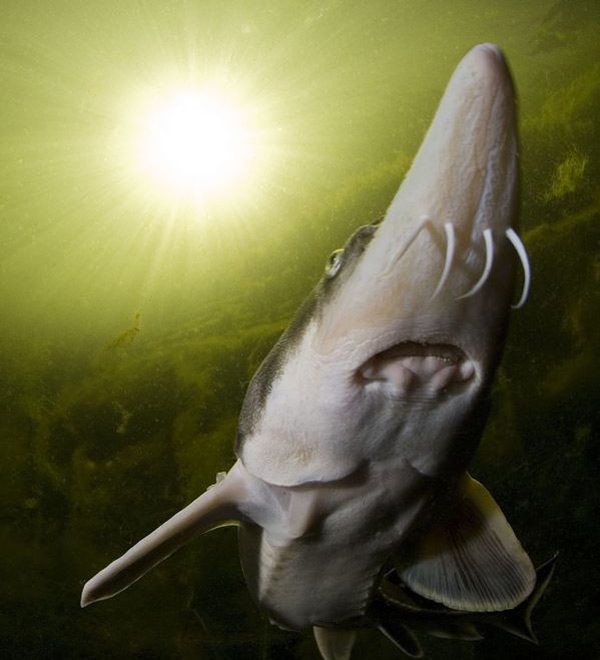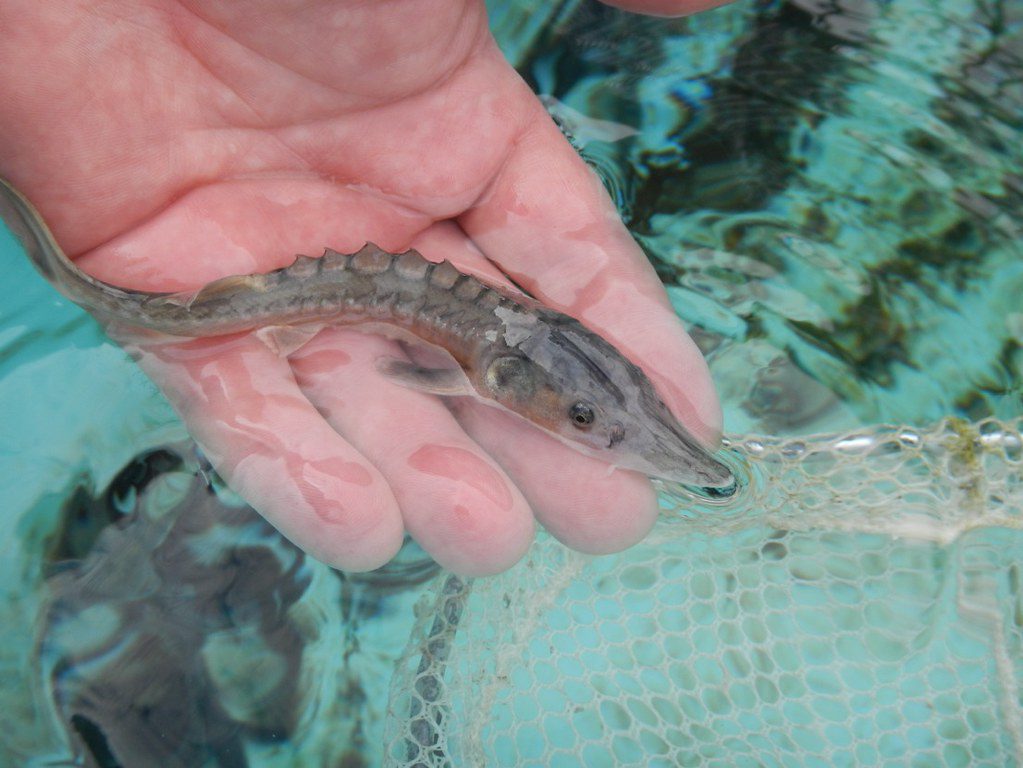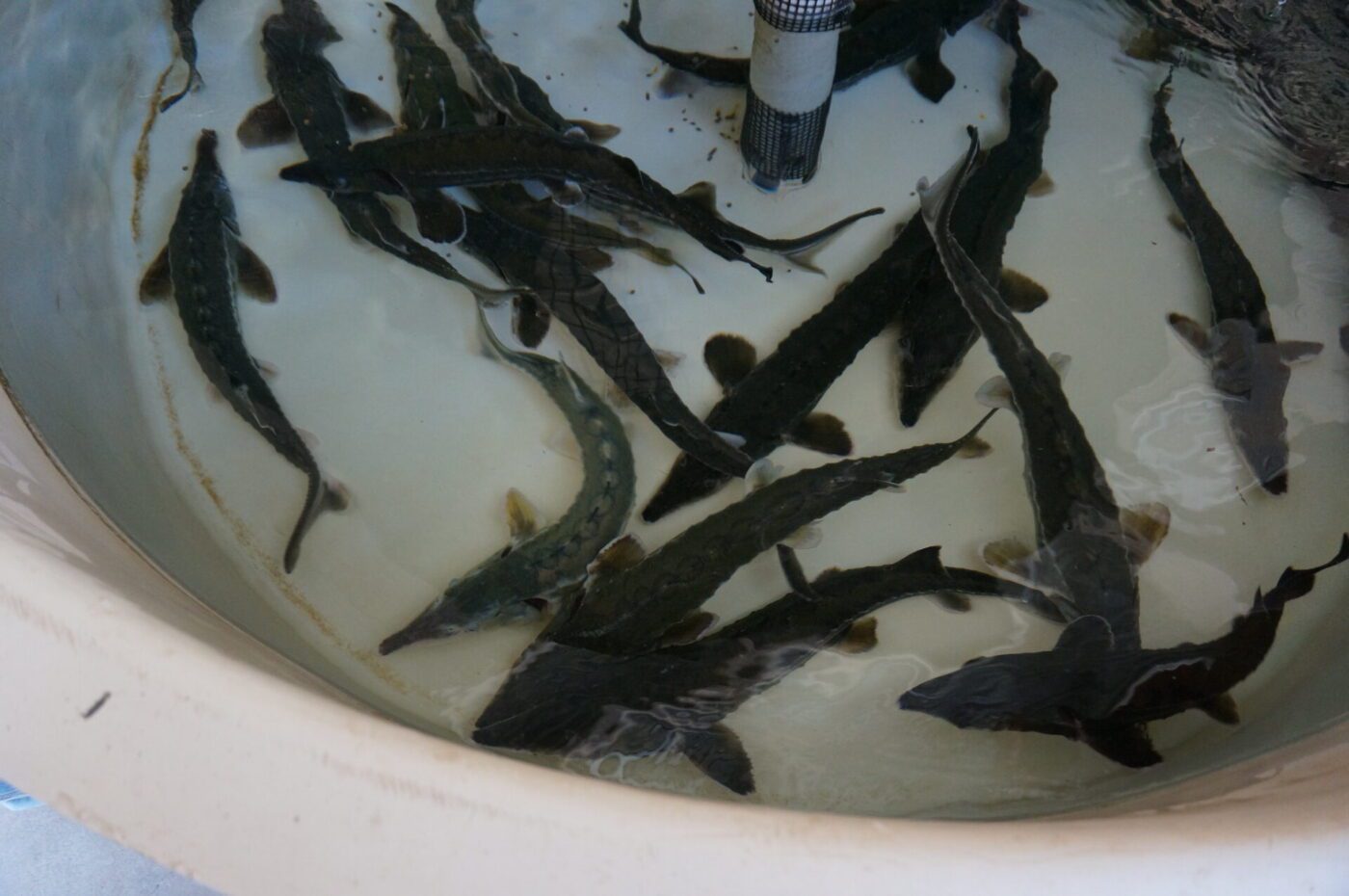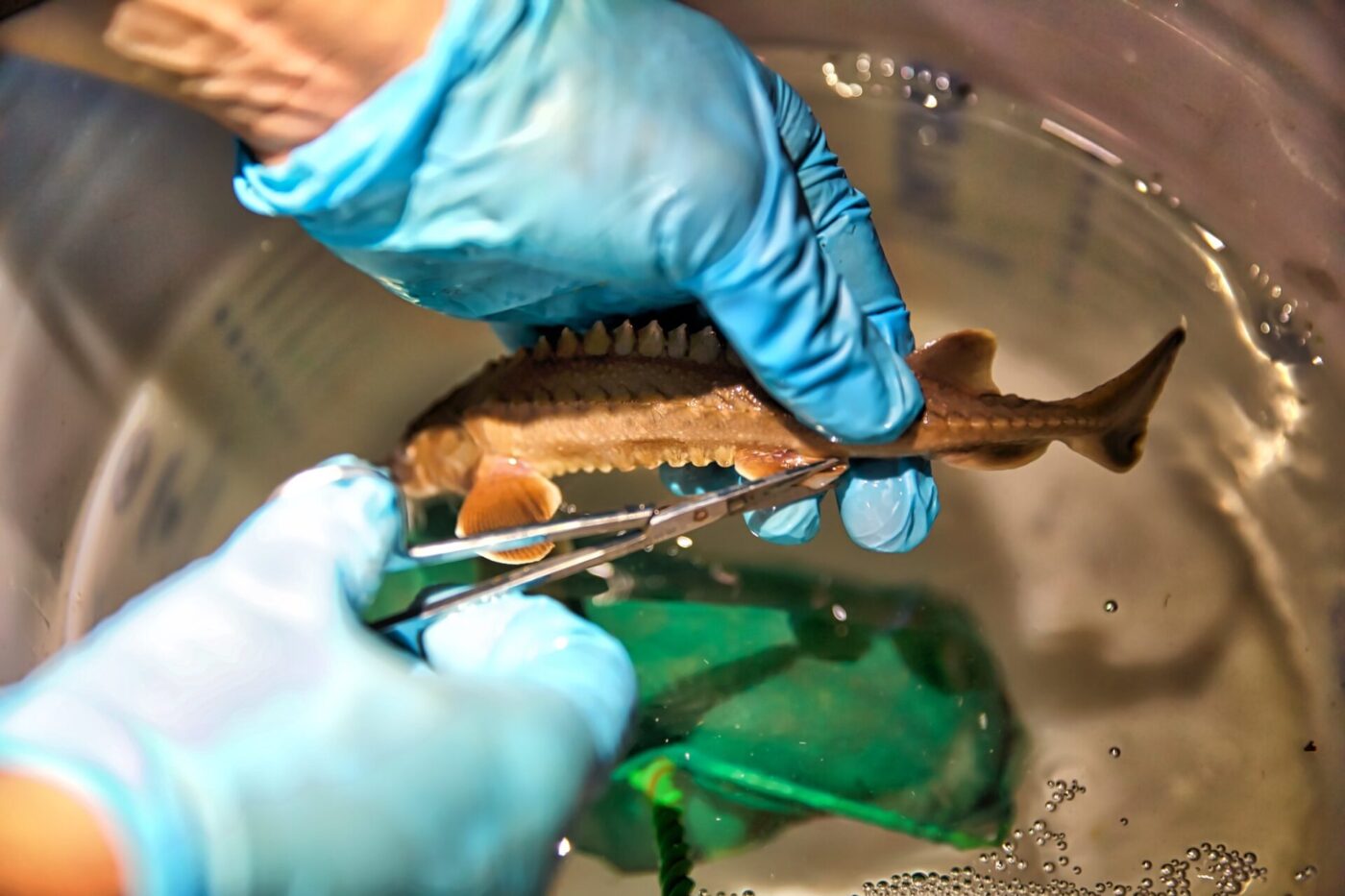Monday December 18, 2023

Green sturgeon are one of eight North American sturgeon species and one of two found in California. As a long-lived species they can survive up to 70 years, reach nearly nine feet in length, and grow to weigh around 350 pounds. Although their large size may give green sturgeon the appearance of a formidable fish predator, their vacuum-like, toothless mouths are better suited for sucking up invertebrates off the ocean or river floors – only occasionally do they catch small fishy snacks. This species has the greatest range of any sturgeon native to North America, inhabiting waters from the Bering Sea to Baja California. Notably, there are two distinct population segments (DPS) of green sturgeon in California: the northern (nDPS; including the Eel, Klamath, and Rogue rivers) and southern (sDPS; including the Sacramento, Feather, and Yuba rivers). The sDPS population was listed as threatened under the Federal Endangered Species Act in 2006, and is considered endangered by the International Union for Conservation of Nature.

A juvenile green sturgeon.
Green sturgeon have a complex life history that is threatened by significant human-driven changes to aquatic ecosystems, including habitat degradation and loss. Green sturgeon are anadromous meaning they spend most of their lives in the ocean but return to freshwater to reproduce. Adults migrate to freshwater and spawn in deep sections of the river. Young fish stay in estuaries for one to four years before migrating to the ocean where they spend most of their lives, seasonally traveling between the northern and southern reaches of their range. Adult green sturgeon have high site fidelity, and upon reaching maturity around age 15, they will return to the streams where they were born to reproduce every three to five years. That is if they can successfully get there! Damming of rivers throughout California has all but blocked access to important spawning habitat for green sturgeon, presenting the species with one of their greatest constraints. Entrainment in flood bypass or irrigation systems also poses a threat to juvenile green sturgeon, as flood bypass and irrigation diversion systems may suck them up. In the event that these slow moving, bottom feeding fish end up in unscreened water diversion pipes, they could be killed by pumps or left stranded in irrigation canals and agricultural fields. Indeed, from the time green sturgeon are a few centimeters long until they reach several feet in length, they are faced with a slough of challenges to their survival.

Young green sturgeon in a hatchery.
In addition to threats from habitat degradation and loss, green sturgeon also face threats from poaching and climate change. Green sturgeon are sometimes poached for their eggs which are sold as caviar on the black market. A 2022 poaching attempt in the San Francisco Bay Delta was thwarted by vigilant anglers who saw the event occur and reported the incident to wardens. Upon confronting the suspect and after at least 90 minutes out of the water, wardens found the fish still alive in the back of an SUV and were able to revive and release it. Additionally, the ever-present threat of a changing climate and associated warming water temperatures loom over the green sturgeon – as water temperatures above 20°C (68°F) impair survival and development of embryos. These high temperatures are expected to become more common, likely resulting in reduced green sturgeon reproduction. Historic data on green sturgeon population size prior to listing is limited, but in 1995 the U.S. Fish and Wildlife Service estimated that there were 983 adults in the Sacramento–San Joaquin Estuary. Despite the threats facing the species, recent research suggests there are over 2,000 adults in the sDPS, more than doubling previous estimates.

Photo by Steven Martarano, USFWS.
Since green sturgeon were listed, several efforts have sought to aid in their recovery. Critical habitat for sDPS green sturgeon was designated in 2009 to ensure that any actions permitted, funded, or conducted by federal entities would not negatively affect habitat important for species reproduction and survival. In 2013, the Red Bluff diversion dam, a barrier to sturgeon passage, was decommissioned. With its gates permanently open, green sturgeon have successfully accessed upstream habitat and spawned above the dam every year since – inspiring renewed hope for their recovery. Other small victories include some recent and unexpected sturgeon sightings. A green sturgeon was found for the first time in the Stanislaus River in 2017, and another was spotted in the San Joaquin River in 2020. These novel observations extend the green sturgeon range in inland California further than previously thought by over 70 river kilometers. In further efforts to increase fish passage and floodplain rearing habitat, the California Department of Water Resources implemented improvements to the Fremont Weir, which now allows sturgeon to move freely in high water events from the Sacramento River to the Yolo Bypass floodplain and back again when waters recede. While many actions are in place to help recover green sturgeon populations, they are not out of the woods yet. These fish have persisted for hundreds of millions of years – and can even survive multiple hours stuffed in the back of an SUV – but their precarious status reflects the state of modern fisheries and larger threats facing global biodiversity. Sustained monitoring of green sturgeon and efforts to improve habitat connectivity and quality are necessary if we are to see these gentle giants succeed in their species recovery.
This post is part of our Species Spotlight Series to commemorate the ESA’s 50th anniversary. Follow these posts to learn about threatened and endangered freshwater fish and the role the ESA plays in their continued conservation!
Header Image: An adult green sturgeon.
This post was featured in our weekly e-newsletter, the Fish Report. You can subscribe to the Fish Report here.
